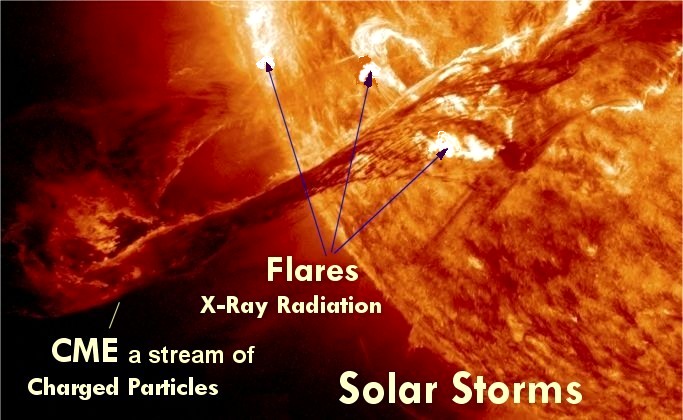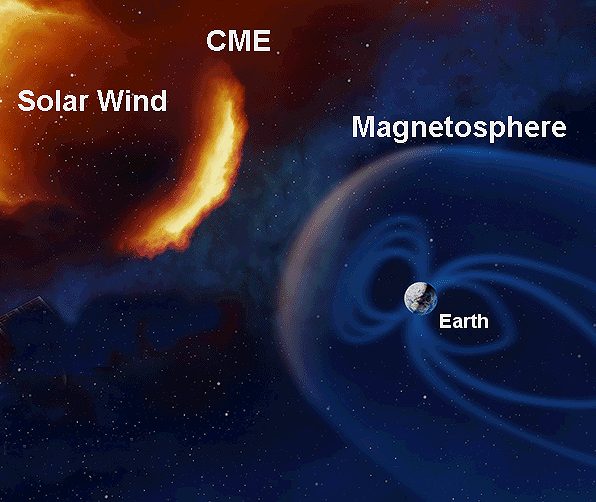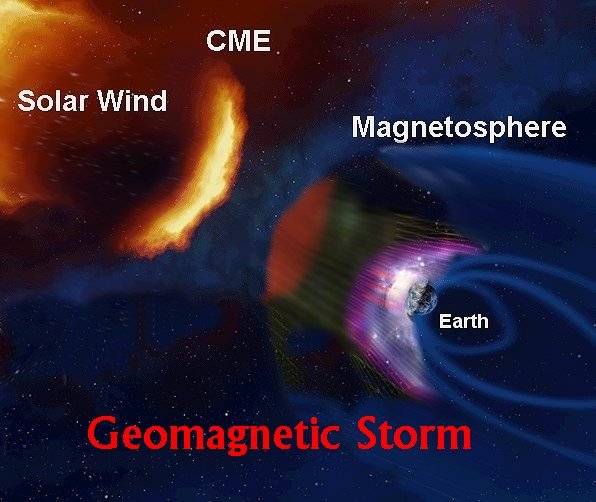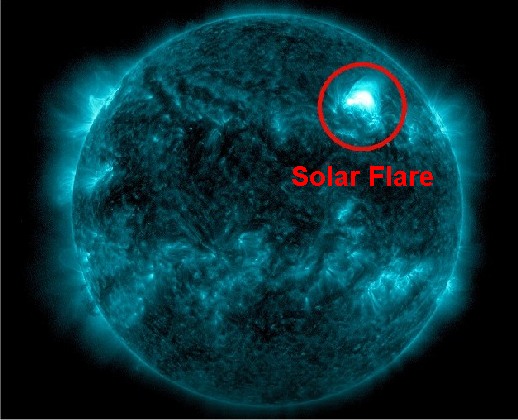
 What are Solar Storms?
What are Solar Storms?
How they induce Geomagnetic Storms?
Solar storms are extreme disturbances caused by the release of energy from the sun's magnetic field.
The sun's magnetic field reverses polarity on a regular basis, about every 11 years. This process is linked to several solar phenomena, including sunspots, flares, and coronal mass ejections (CMEs).
Solar storms cause geomagnetic storms in the Earth's magnetosphere, which can disrupt amateur radio activities.
Geomagnetic storms are not dangerous to people on the ground. However, they can disrupt our technology, potentially affecting satellites, power grids, communication systems, and radio propagation.
Solar Storms

Figure 1: Solar Storms consist Solar Flares and CME
Solar Flare may initiate Coronal Mass Ejections" (CMEs).
Solar storms begin with solar flares:
Solar Flares are sudden X-Ray flashes, usually observed near the active regions of the Sun.
This radiation travels at the speed of light, reaching Earth in about eight minutes and twenty seconds.
Coronal Mass Ejections (CMEs) are massive clouds of solar plasma and magnetic field that are ejected from the Sun's corona into space. CMEs can carry billions of tons of solar material and travel at speeds of up to several million kilometers per hour.

Figure 3: Magnetosphere shields Earth from CME
CMEs cause geomagnetic storms

Figure 4: Artist view of a Geomagnetic Storm
Major magnetic storms may block HF propagation (3–30 MHz) by modifying the distribution of free-electrons in the ionosphere.
Solar storms can also affect technology like satellites, GPS systems, and radio communications, causing disruptions like GPS navigation in 2017 and a nine-hour blackout in Quebec in 1989. Although not directly threatening humans, their impact on technology and infrastructure is significant.
- References:
- May 2024 Solar Storms Wikipedia
- Geomagnetic Storms May 2024 Duckduckgo
shows near-real-time indices and explains what the terms mean.

